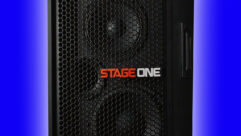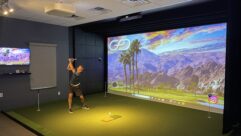Fascinating Facts About 3LCD
Liquid crystals were discovered in 1888 by botanist Friedrich Reinitzer, who wrote to German physicist Otto Lehmann for help in making sense of his discovery.
- Liquid crystals were discovered in 1888 by botanist Friedrich Reinitzer, who wrote to German physicist Otto Lehmann for help in making sense of his discovery.
- In 1904, Lehmann published his work, “Liquid Crystals.”
- The Marconi Wireless Telegraph company patents the first practical application of the technology, “The Liquid Crystal Light Valve,” in 1936.
- Seiko developed the first LCD quartz watch in 1973, with six-digit LCD display.
- In 1975, Seiko created the Epson brand in 1975.
- In 1982, Epson unveils the first TV watch using LCD.
- In developing LCD technology, Epson found that combining three LCDs produced the sharpest, most colorful images for TVs and projectors. To differentiate its technology from single-LCD technology, the company called it 3LCD.
- In 1989, Epson unveiled the first 3LCD multimedia projector for video imaging.
- 3LCD projectors pass light through three LCD panels about the size of postage stamps. The LCD panel comprises miniscule pixels that may be clear, partly clear, translucent, or opaque, and work independently from one another, like shutters that can each be angled at varying degrees from completely open to completely closed, to create a rich grayscale.
- Together, the 3LCD pixels create the image, light passes through the clear or partly clear areas in the same way that light passes through the clear or gray parts of a photographic negative.
- A 3LCD projector’s lens uses dichroic mirrors to break the lamp’s white light into red, green, and blue light. Each color then passes through its own LCD panel. After passing through the panels, the light streams are recombined by a prism before being projected onto the screen. By thus including each of the three colors in every pixel, which enables a great range and nuance of color, the technology creates an image with rich natural color and smooth movement.
- In 2005, Seiko Epson Corp., Fujitsu Ltd., Hitachi Ltd., Panasonic/Matsushita Electrical Industrial Co., Sanyo Electric Co. Ltd. and Sony Corp. officially announced the 3LCD group, formed to market and promote 3LCD technology and products.
- Other major manufacturers that now use 3LCD technology include Barco N.V., Canon Inc., Christie Digital Systems Inc., Mitsubishi Corp., Toshiba Corp. and ViewSonic Corp., among others.
- In April, 3LCD manufacturer Epson introduced a breakthrough below $3,000, 1080p projector, bringing high-definition home theater within mass-market price ranges.
- LCD panels rely on cholesteric liquid crystals. A new automotive paint uses carbohydrate-based liquid crystals to make a VW bug look blue or green, depending on viewing angle.
Sources: Seiko Epson Corp., British Broadcasting Co., 3LCD Group, iSuppli Corp., Decision Tree Consulting Ltd., Liquid Crystal Group Hamburg










